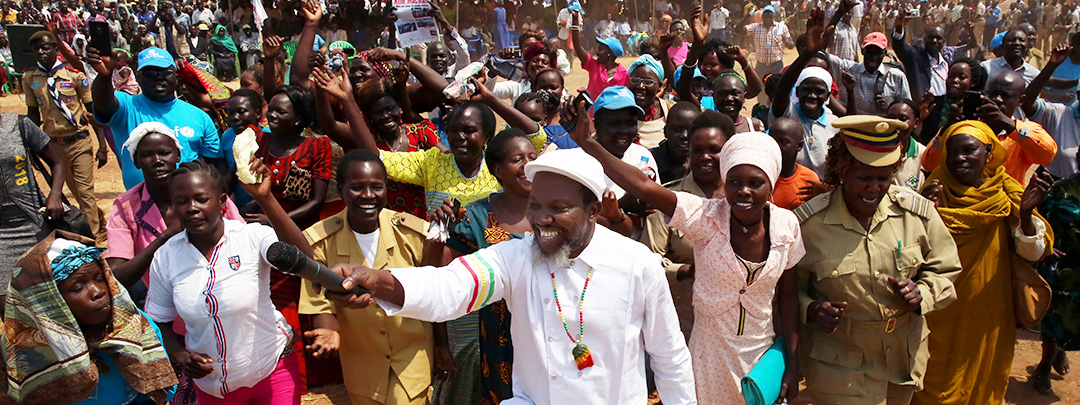Toolkit on Monitoring and Evaluationof Environmental Peacebuilding
This toolkit is a unique product, born out of a rigorous and extensive research process that draws on the experience and expertise of practitioners and academics in the field. By injecting fresh ideas and clarity into the design and implementation of M&E for environmental peacebuilding projects, it serves as an off-the-shelf guide to inform and improve M&E. The toolkit was adapted into multiple versions to facilitate used by practitioners with varying needs and backgrounds. It contains basic information as well as expansion modules for certain sections. Thus, the toolkit aims to equip practitioners with both proven and innovative tools and approaches tailored to navigating key issues of M&E for environmental peacebuilding. It provides an overview of the importance of ME&L, challenges, a practical conceptualization of M&E, good practices, context-based guidance, and external learning resources.
This toolkit seeks to enhance and reinforce environmental peacebuilding as a field by developing more effective approaches to M&E and learning, and enhancing our ability to show impact of our interventions. The toolkit introduces emerging issues for M&E of environmental peacebuilding––such as the use of big data, geospatial analysis, and frontier technologies––and attempts to help practitioners and researchers better understand them. Its user-friendly design and accessible language ensure that practitioners from a range of backgrounds and disciplines can benefit from its insights. Whether you are a peacebuilding, development, environmental, or M&E practitioner, this toolkit has been designed as a key resource for anyone who wants to make a meaningful impact in the environmental peacebuilding field.
If you have any suggestions, corrections, praise, or additions, please email them to bruch@eli.org to be considered for the next iteration.
Partners

Case Studies, Reports, and Video Insights
Table of Contents
Primer
This primer serves as a complementary document of the toolkit and designed for practitioners who are new to M&E and/or environmental peacebuilding. The primer offers valuable background information on key concepts related to environmental peacebuilding M&E, including its key characteristics, objectives, common activities, and challenges. For practitioners who are already proficient in M&E and environmental peacebuilding, the primer may not be necessary and may choose to bypass it.
Preliminary Material and Introduction
This chapter provides an overview of the objectives of the toolkit, its intended audience, the roadmap for navigating the contents, and guidance on how to use it effectively. Additionally, this chapter explains the methodology used in developing the toolkit and provides a brief overview of each subsequent chapter's contents. This information is essential for readers to understand the context and purpose of the toolkit and to navigate it efficiently.
Design
This chapter provides critical insights into the design considerations and practices necessary for effective environmental peacebuilding interventions. It emphasizes the need for a comprehensive understanding of the complex and multi-layered context in which these interventions operate. Specifically, the chapter focuses on outlining significant factors and methodologies that are necessary for conducting context analysis, needs assessment, gender dynamics, conflict analysis, and environmental and social impact assessments. The Design Chapter provides practitioners with valuable guidance on how to tailor their interventions to the specific context in which they operate, ensuring appropriateness and effectiveness.
Monitoring
This chapter provides critical insights into the design considerations and practices necessary for effective environmental peacebuilding interventions. It emphasizes the need for a comprehensive understanding of the complex and multi-layered context in which these interventions operate. Specifically, the chapter focuses on outlining significant factors and methodologies that are necessary for conducting context analysis, needs assessment, gender dynamics, conflict analysis, and environmental and social impact assessments. The Design Chapter provides practitioners with valuable guidance on how to tailor their interventions to the specific context in which they operate, ensuring appropriateness and effectiveness.
Evaluation
This chapter is dedicated to discussing the reasons, considerations, and approaches for conducting and sharing systematic evaluations for ongoing or completed environmental peacebuilding interventions. Its primary goal is to help practitioners develop a comprehensive understanding of how to design and conduct evaluations that are sensitive to the unique contexts and circumstances of environmental peacebuilding. In particular, practitioners will become familiar with multiple evaluation approaches that can be used in environmental peacebuilding interventions and the respective benefits and limitations of each. Besides, the chapter emphasizes the need to integrate conflict sensitivity and accountability, as well as the importance of making evaluations inclusive and gender-sensitive.
Learning
This chapter offers valuable insight into why practitioners should prioritize a learning-focused approach in their M&E plans and how it can guide opportunities for improvement in environmental peacebuilding interventions. In this chapter, practitioners will gain an understanding of why learning is crucial for Environmental Peacebuilding M&E, and explore key learning approaches such as ensuring inclusivity in the learning process, focusing on the Environment-Conflict-Peace Nexus, sharing insights with the community, and encouraging funders to prioritize learning. Additionally, this chapter equips practitioners to understand and navigate the learning challenges that may arise during the course of their work.
Glossary
The glossary of this toolkit provides an essential reference for key terms, concepts, and acronyms used throughout the document. It aims to enhance clarity and consistency of communication, ensuring that readers have a clear understanding of the language used in this field.
